Discover how different schedulers in Scenario influence image quality and efficiency, and learn how to select the best one for your creative projects.
Schedulers are only available for Stable Diffusion models.
Schedulers play a critical role in the process of image generation, guiding the step-by-step refinement of images in generative AI models.
Denoising Samples: Schedulers help clean up the model’s output at each stage of the process, known as timesteps, by reducing noise and enhancing image clarity.
Timesteps: These are markers within the process that indicate the progression of the image’s development.
Forward and Backward Process: Image creation involves moving forward through these timesteps, while fine-tuning (inference) is done by moving backward through them to achieve the final result.
Schedulers offer a range of outcomes, allowing users to select the one that best suits their specific needs. For a comprehensive list of schedulers available through the API, please visit: Schedulers Documentation.
For most use cases, the default scheduler is recommended. Adjusting the scheduler is typically reserved for advanced users seeking more control over the generation process.
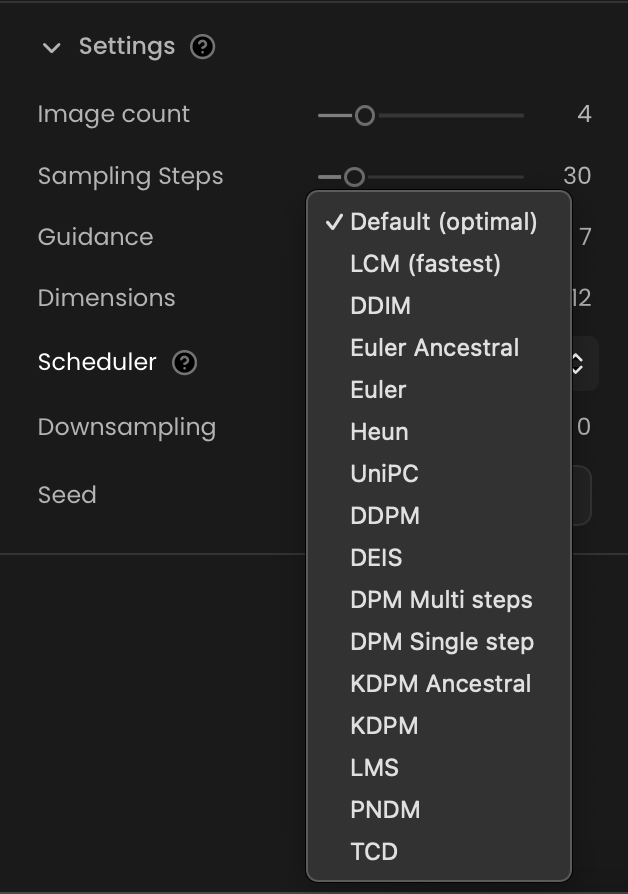
Schedulers can be categorized based on the algorithms they use. Below are some of the most commonly used schedulers:
Euler and Euler Ancestral: These schedulers are known for their speed, often requiring fewer steps to produce high-quality images.
LCM Scheduler: The fastest scheduler available, significantly enhancing the speed and efficiency of image generation on Stable Diffusion 1.5 and SDXL. However, fewer steps can sometimes result in lower image quality. More info here.
Denoising Diffusion Implicit Models (DDIM): Designed for efficiency, offering considerable reductions in processing time.
DPM: Improve image quality by approximating solutions to differential equations, available in both single-step and multi-step variants.
KDPM and KDPM Ancestral: KDPM offers fine control over image generation, while KDPM Ancestral enhances diversity and explores new image spaces. KDPM is particularly effective in delivering well-controlled and varied outputs.
UniPC: This unified predictor-corrector framework improves both sampling quality and efficiency, making it ideal for situations where speed is a priority.
Denoising Diffusion Probabilistic Models (DDPM): Known for generating high-quality samples, DDPM typically requires many iterations, making it suitable when quality is more important than speed.
Pseudo Numerical Methods for Diffusion Models (PNDM): These techniques accelerate DDPMs without compromising the quality of the generated samples.
Heun Sampling: This scheduler is highly efficient, using adaptive step sizes and noise-sensitive adjustments to ensure precise and accurate diffusion.
For a deeper understanding of Schedulers (also known as Samplers), click here.
The choice of a scheduler is crucial in determining the quality and characteristics of the generated image. The best scheduler for your project will depend on your specific goals. Each scheduler has its strengths and trade-offs, so understanding these can help you select the one that best aligns with your needs.
Results Comparison: The following grid of images demonstrates the effect of different schedulers.
Model: 3D Style Fantasy Character
Seed: 1595264324
Prompt: Portrait of a dwarf in armor, 4K
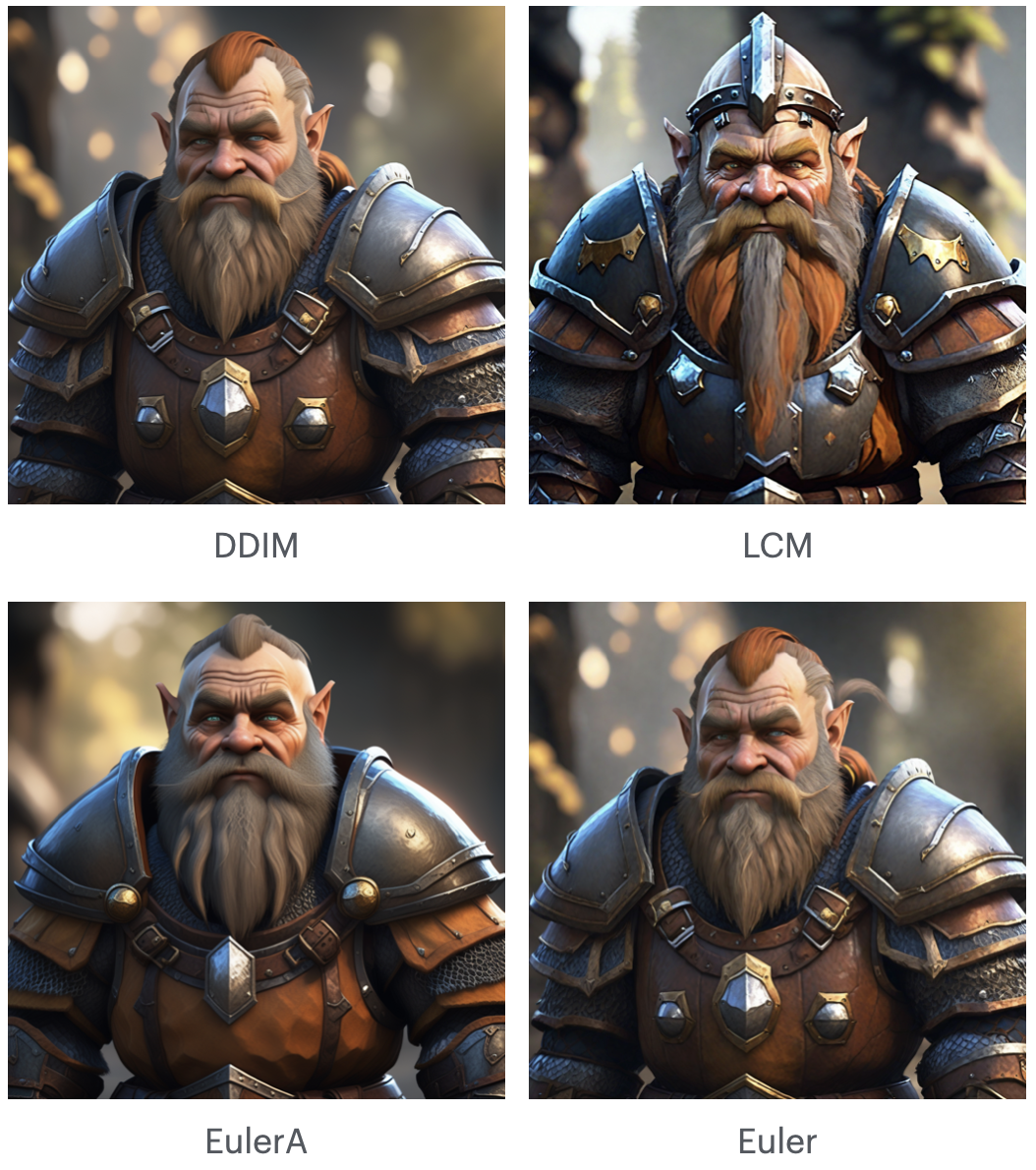
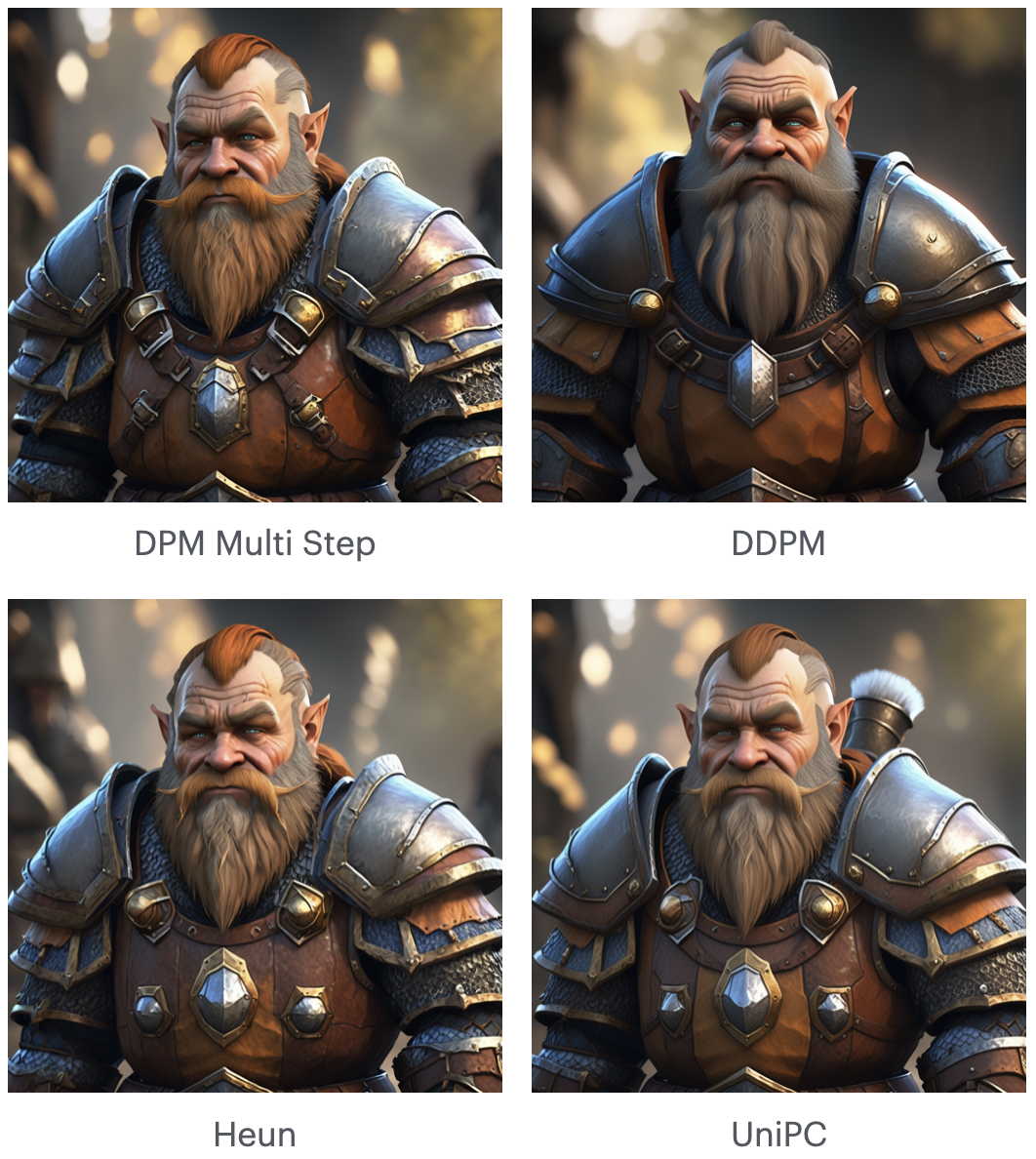
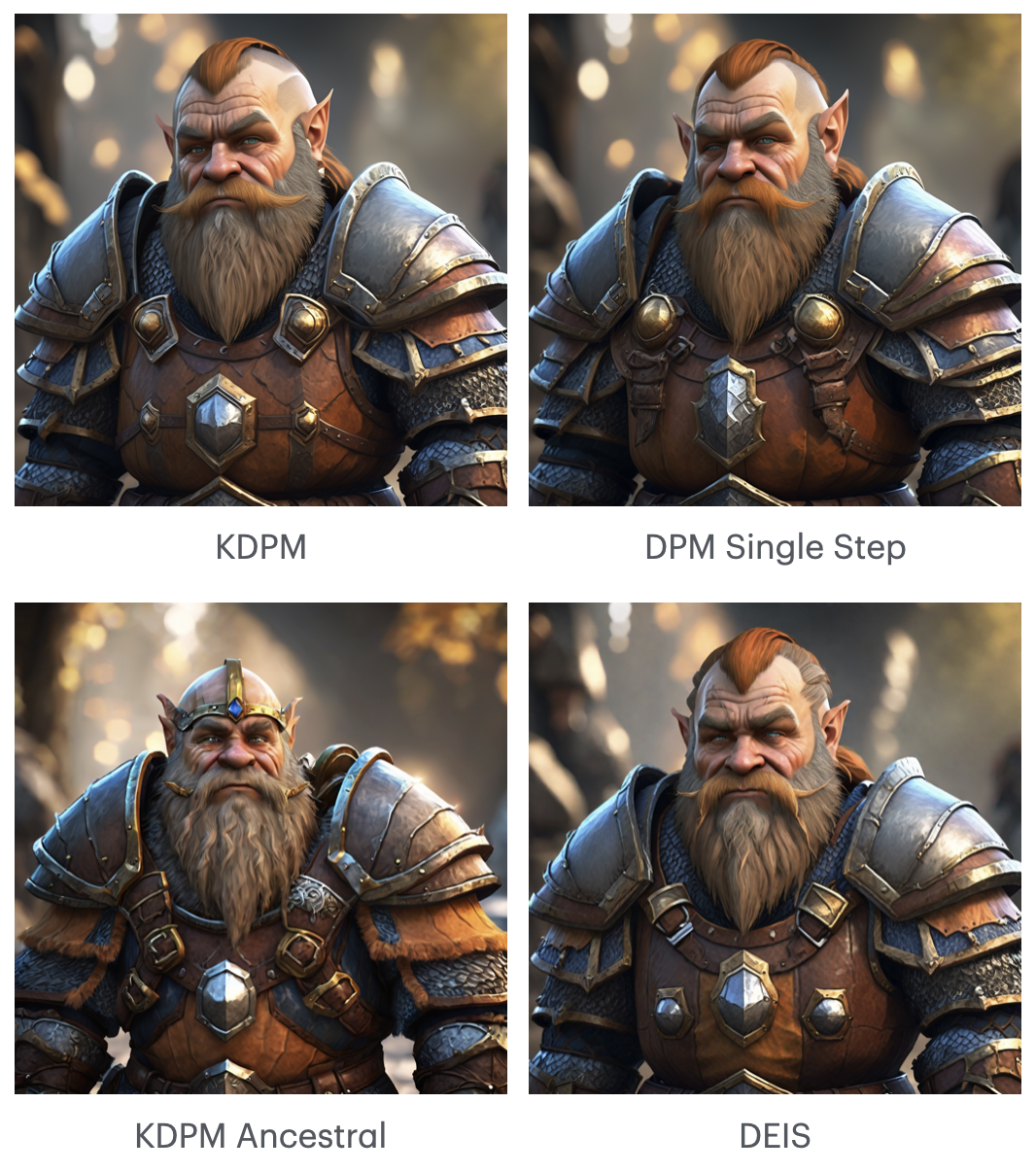
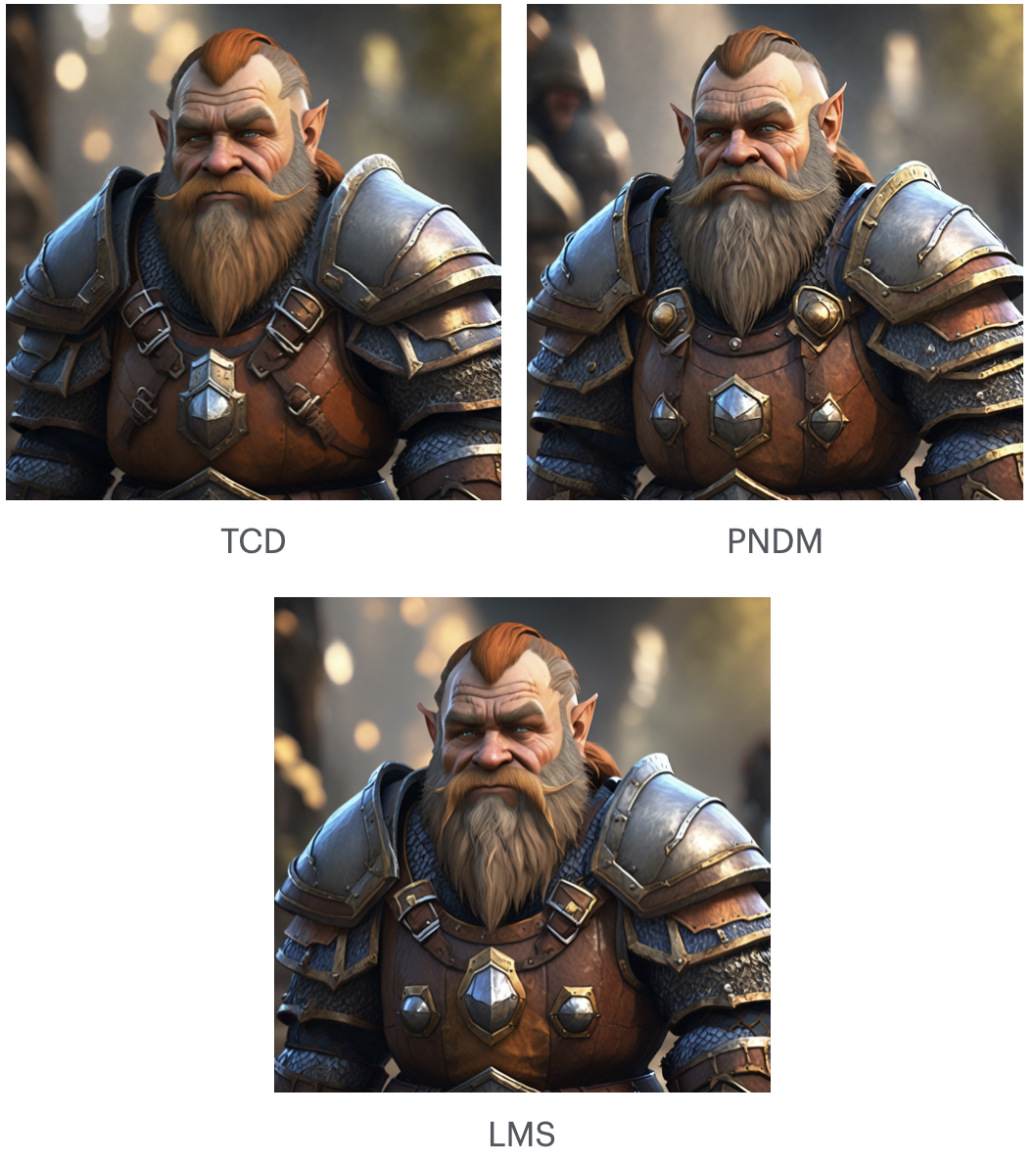
Benefits:
Significantly boosts the speed and efficiency of image generation on Stable Diffusion 1.5 and SDXL.
Guidelines for Using LCM:
Default Settings: After selecting the LCM Scheduler, you’ll notice lower default values for Sampling Steps and Guidance compared to other schedulers.
Quality Trade-Off: Be aware that the LCM Scheduler may reduce image quality, potentially leading to undesirable effects in some outputs.
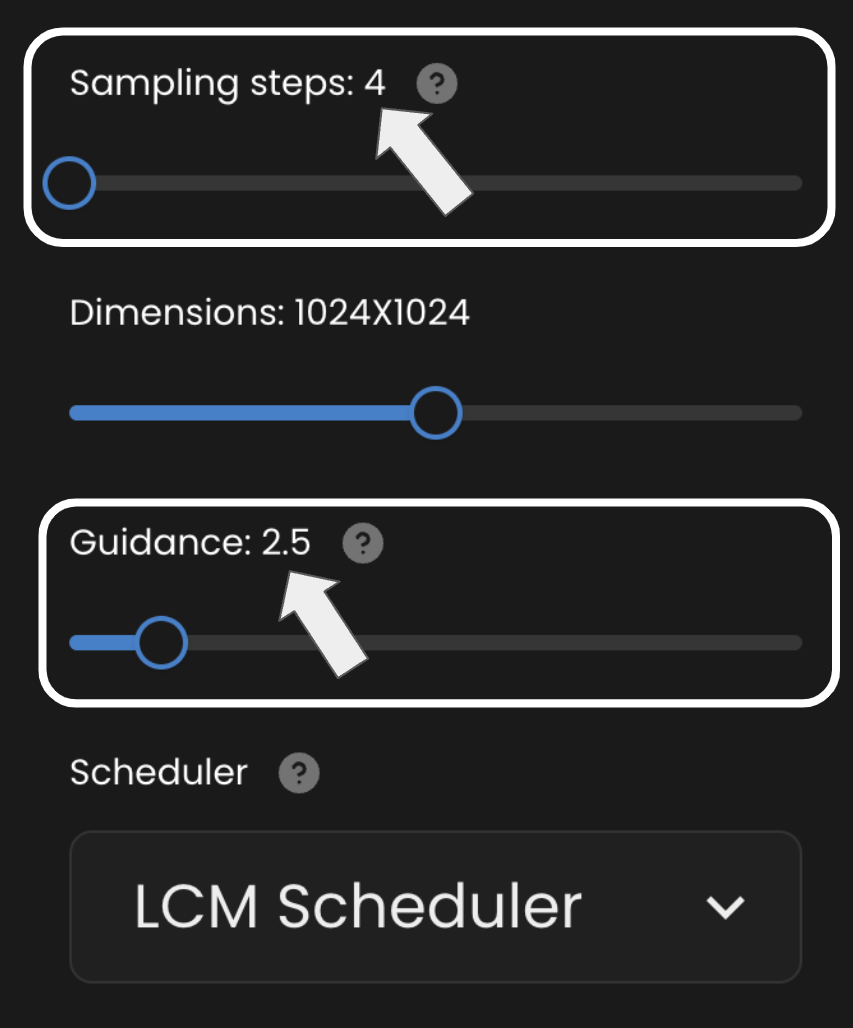
Adjusting Settings:
Sampling Steps: Increase by one per iteration to see how the image responds (a maximum of six steps is recommended for SDXL).
Guidance: Decrease in increments of 0.5. For SDXL, effective values are typically around 1.0 to 1.5.
Caution:
Use caution when adjusting these settings to find the optimal balance between speed and image quality.
Was this helpful?

Quentin